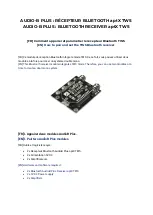
EB200 Manual
Remote control
4052.2000.02 4.125
E-7
Input unit:
Data transmission via sockets is packet-oriented. Each packet received is handed over to command
recognition.
Command detect:
Command detect analyzes the data received from the input unit. Data are processed in the sequence
they have been received. The data received consist of strings that have to be in accordance with the
SCPI standard. The SCPI standard is based on the IEEE 488 standard. Normally, this standard only
applies to IEC/IEEE bus (also referred to as IEC625, HPIB or GPIB). Another IEEE standard, IEEE
1174, is a supplement to IEEE 488, making it applicable also to serial links (RS232). EB200 uses this
standard as a basis for SCPI commands via sockets.
Each identified setting command contained in an SCPI string is first stored in a buffer memory. Only a
<Program Message Terminator> (line feed) or a query command will cause the setting commands to be
sent to the data memory, where they are checked for consistency. If the commands are consistent, they
will be executed at once, and the other modules will be informed. Query commands generate a request
to the memory. The memory sends back the data, which will then be processed according to the SCPI
standard by the command detect. Finally, the SCPI response strings are sent to the output unit.
Output unit:
The output unit collects all data in the output buffer that were generated in response to query
commands. If the command detect identifies the end of an SCPI command (by the <Program Message
Terminators>), it causes the output unit to send the data in the output buffer to the host computer via
the socket.
Status reporting system:
The Status Reporting System gathers information on the device status and makes it available to the
output unit on request. The Status Reporting System may be used for messaging asynchronous events
(eg error statuses, availability of results, data modifications by other users, etc.) to the host computer.
















































